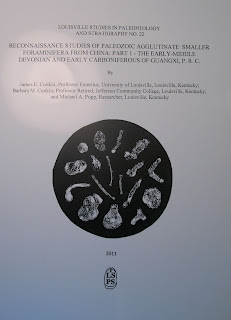As documented in the The Popular Science Monthly of June 1894, who takes their information for Dr. W.S.W. Ruschenberger. He states that a number of young men in Philadelphia would meet in the evenings and study the laws of creation. A typical meeting place was John Speakman's apothecary shop on the corner of Market and Second Streets. On January 25, 1812, six persons (Dr. Gerard Troost, Dr. Camillus Macmahon Mann, Jacob Gilliams, John Shinn, Jr., Nicholas Parmantier and John Speakman) met and formed a society for the "cultivation of natural science". The minutes of the event (note one source says 6 people present but the minutes show Thomas Say signed this so there may have been a 7th person as the video states):
Resolve—The gentlemen present agree to form, constitute and become a Society for the purpose of occupying their leisure occasionally, in each other's company, on subjects of natural science, interesting and useful to the country and the world, and in modes conducive to the general and individual satisfaction of the members, as well as to the primary object, the advancement and diffusion of useful, liberal, human knowledge. And the said gentlemen present.pledge themselves to the formation and persevering support of this said intended society accordingly.The society's constitution was agreed upon March 17, 1812. In that meeting it was stated:
Every individual of the present members, founders of the Academy of Natural Sciences, has equally felt that an association of this nature, tendency, operation and bearing, free and perpetually occlusive of political, religious and national partialities, antipathies, preventions and prejudices, is necessary for the easier and more perfect acquirement and the better progress of natural knowledge, wherever it may be desired. We will contribute to the formation of a Museum of Natural History, a Library of Works of Science, a Chemical Experimental Laboratory, an Experimental Philosophic Apparatus, and every other desirable appendage or convenience for the illustration and advancement of natural knowledge and for the common benefit of all the individuals who may be admitted members of our institution in the manner herein to be stated, or stated already.The constitution was adopted on March 21, 1812 marking that day as the institution's beginning. See a copy of the Academy of Science portrait of their first president painted in 1824 by Charles Wilson Peale at the The Mineralogical Record Biographical Archive.
On May 7, 1812 Gerard Troost was elected the Academy's first president. He held this office until 1817 when William Maclure succeed him. Mr. Maclure would later recruit Gerard Troost to become part of the utopian experiment in New Harmony, Indiana. Learn more about that at a new exhibit at the Indiana State Museum (click this link).
The Academy stored its first specimens and equipment in a room at 121 North Second Street. Dr. Troost, Mr. Isaac Lea, Dr. Hays, and Mr. S. Hazard contributed minerals to the collection. On August 15, 1812 the Seybert mineral specimens were added to the collection.
The Academy of Natural Sciences of Drexel University web site shows some items in a special bicentennial exhibit: http://www.ansp.org/visit/exhibits/academy-at-200/
A commemorative video has been created by the Academy. A procedure that differs from what I was taught about collections management is one should wear gloves as to not contaminate specimens with body oils and dirt. When working with minerals, wearing gloves also helps prevent contamination when handling specimens with heavy metals or radioactive elements.
Video of mineral collection at the Academy
Sources for this posting:
Web site of The Academy of Natural Sciences of Drexel University
The Popular Science Monthly, Sketch of Gerard Troost, pp.258-264, June 1894.
Wikipedia entry on Gerard Troost
Blog posting Louisville Fossils on Gerard Troost
Digital Collections of U.S. National Library of Medicine, A biographical sketch of the late Thomas Say, Esq: read before the Academy of Natural Sciences of Philadelphia, December 16, 1834, by Benjamin Hornor, page 26 (Extracts from the constituent Minutes of the Academy of Natural Science)
Picture from wikipedia.org and is in the public domain. Source is History of Medicine image library a the U.S. National Library of Medicine.
































